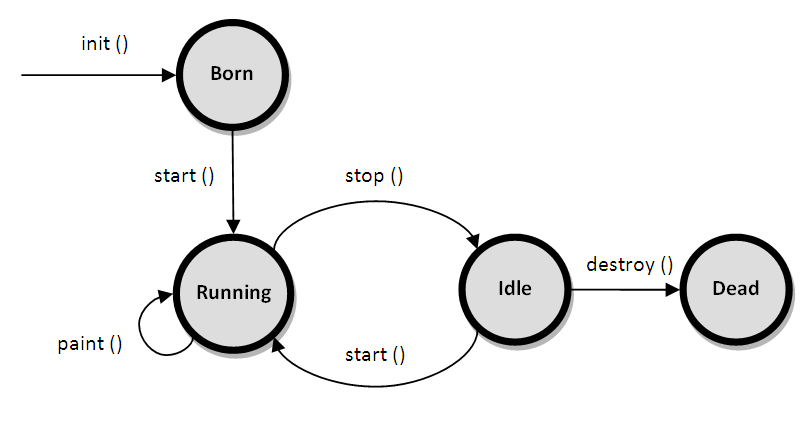Applet Life Cycle
The life cycle of an applet is as shown in the figure below:


- As shown in the above diagram, the life cycle of an applet starts with init() method and ends with destroy() method.
- Other life cycle methods are start(), stop() and paint().
- The methods to execute only once in the applet life cycle are init() and destroy().
- Other methods execute multiple times.
Below is the description of each applet life cycle method:
init():
- The init() method is the first method to execute when the applet is executed.
- Variable declaration and initialization operations are performed in this method.
start():
- The start() method contains the actual code of the applet that should run.
- The start() method executes immediately after the init() method.
- It also executes whenever the applet is restored, maximized or moving from one tab to another tab in the browser.
stop():
- The stop() method stops the execution of the applet.
- The stop() method executes when the applet is minimized or when moving from one tab to another in the browser.
destroy():
- The destroy() method executes when the applet window is closed or when the tab containing the webpage is closed.
- stop() method executes just before when destroy() method is invoked.
- The destroy() method removes the applet object from memory.
paint():
- The paint() method is used to redraw the output on the applet display area.
- The paint() method executes after the execution of start() method and whenever the applet or browser is resized.
The method execution sequence when an applet is executed is:
- init()
- start()
- paint()
The method execution sequence when an applet is closed is:
- stop()
- destroy()
Example program that demonstrates the life cycle of an applet is as follows:
Output of the above applet program when run using appletviewer tool is:
Applet initialized
Applet execution started
Painting…
Painting…
Applet execution stopped
Applet destroyed
Comments
Post a Comment